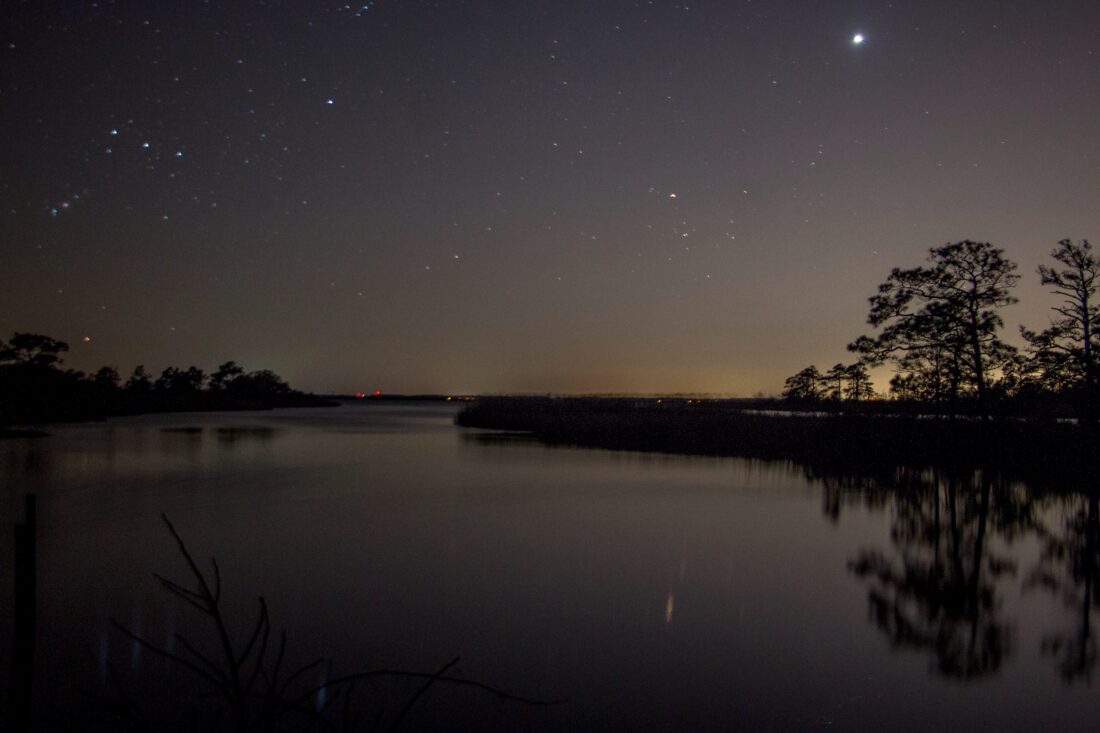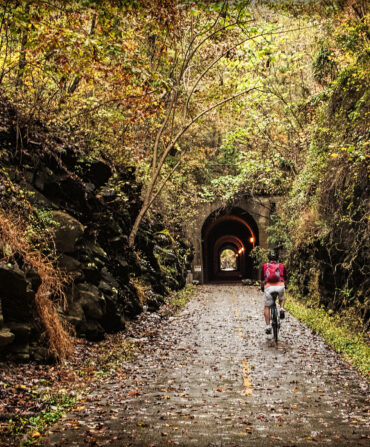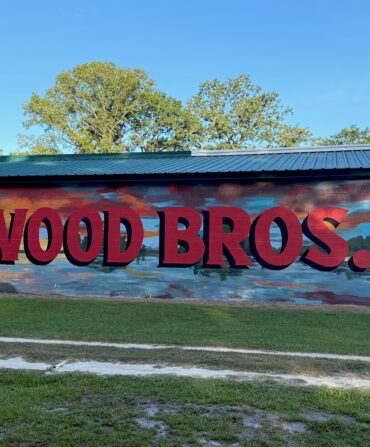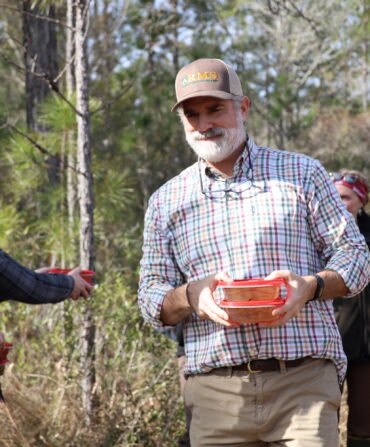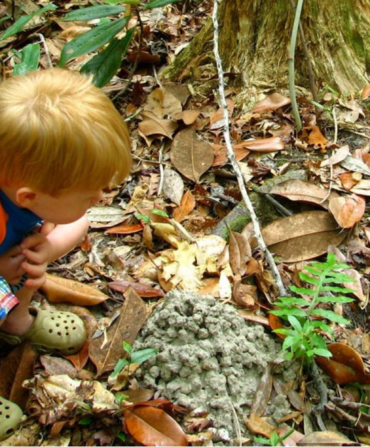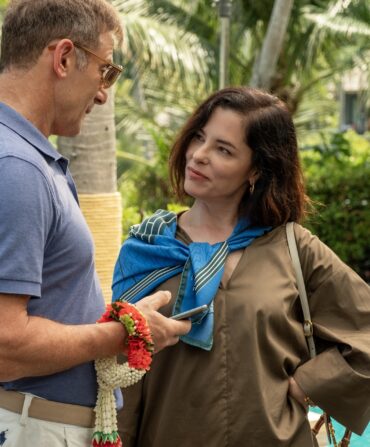Like many beautiful spots along the East Coast, Virginia Beach brims with hotels and its boardwalk hums with vacationers. Yet hidden just beyond the crowds lies one of the South’s most unspoiled coastal preserves—a place even lifelong locals like Megan Contreras admit they’re still discovering.
Contreras grew up in Virginia Beach, the city where English settlers first dropped anchor in 1607. But as she told me on a recent full-moon night, its wilder secret lies farther south, in a place called False Cape. “I live right next to First Landing State Park,” Contreras says, “but I had never even heard of False Cape State Park until two years ago.”
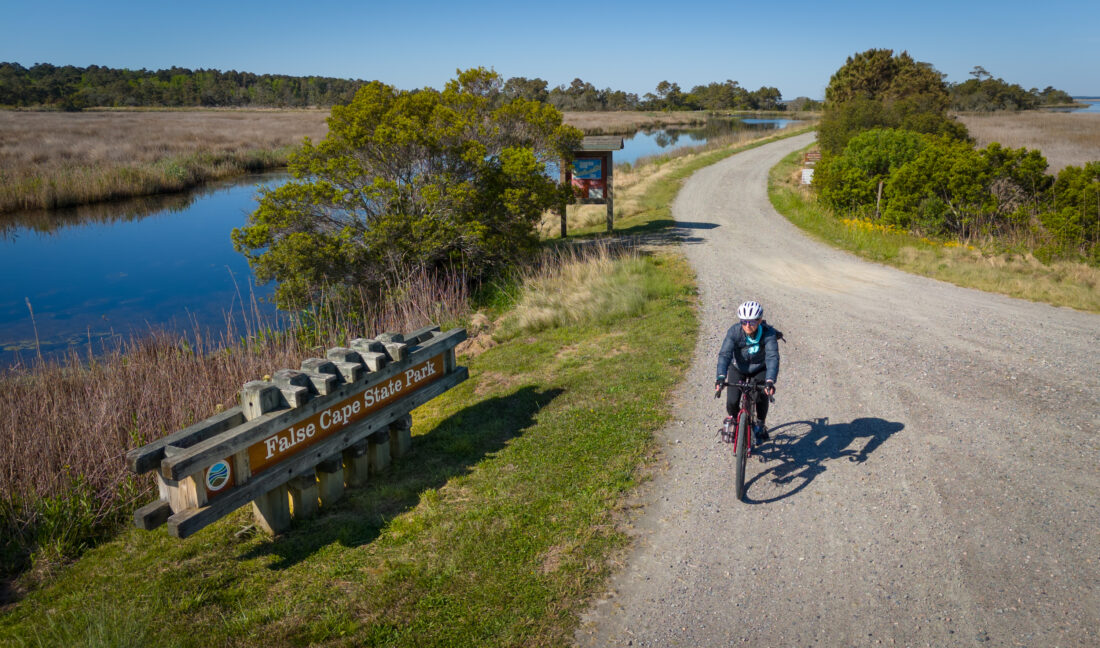
False Cape, the southernmost state park in Virginia, stretches across a narrow spit of barrier land wedged between Back Bay and the Atlantic. The park is not reachable by car, so visitors arrive by foot, bike, boat, or in my case, tram. The ride was the beginning of a journey granted to just twenty-four guests on the park’s lunar-calendar-led False Cape After Dark tours. Every full moon, a state park ranger and two volunteers take guests into the 4,321-acre property as the sun sets.
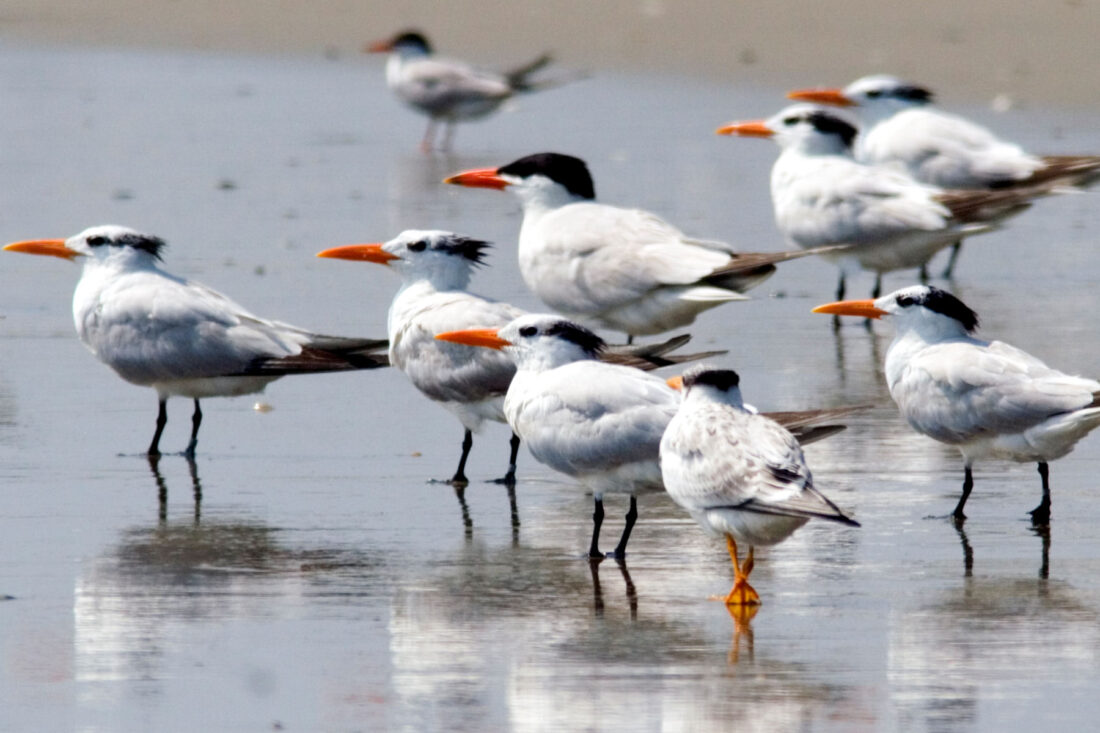
“Yep, that’s a cottonmouth,” our guide, intern ranger Kyle Kiester, called out from the driver’s window as the open-air tram pulled to a stop. In the headlights, the venomous serpent leisurely crossed the road.
“They like to hunt at dusk, when the rodents start moving,” added Contreras, one of the evening’s volunteers, from her seat across from me and my ten-year-old son. Barely five minutes after the first snake slid past and the tram had rattled deeper into the marsh, Kiester hit the brakes again. “Got another one.”
“Mom, write that down! Two cottonmouths in one night!” my cub reporter crowed. On the pre-tween thrill scale, this ranked somewhere between unwrapping a rare Pokémon card and skipping school for a day at Busch Gardens.
But the excitement was just starting. Kiester parked and announced our hike would begin. Headlamps and flashlights switched on, we marched onto a lengthy dock stretching into Back Bay. “I’d stay in the middle and watch where you step,” he cautioned.

I swung my flashlight to the right and nearly jumped into the water. Strung between every post like your grandmother’s most macabre doilies were vast spider webs, each cradling a seemingly glowing arachnid. My first instinct was to scream, but instead I found myself gripped by a kind of delirious curiosity, one that lingered the whole three hours.
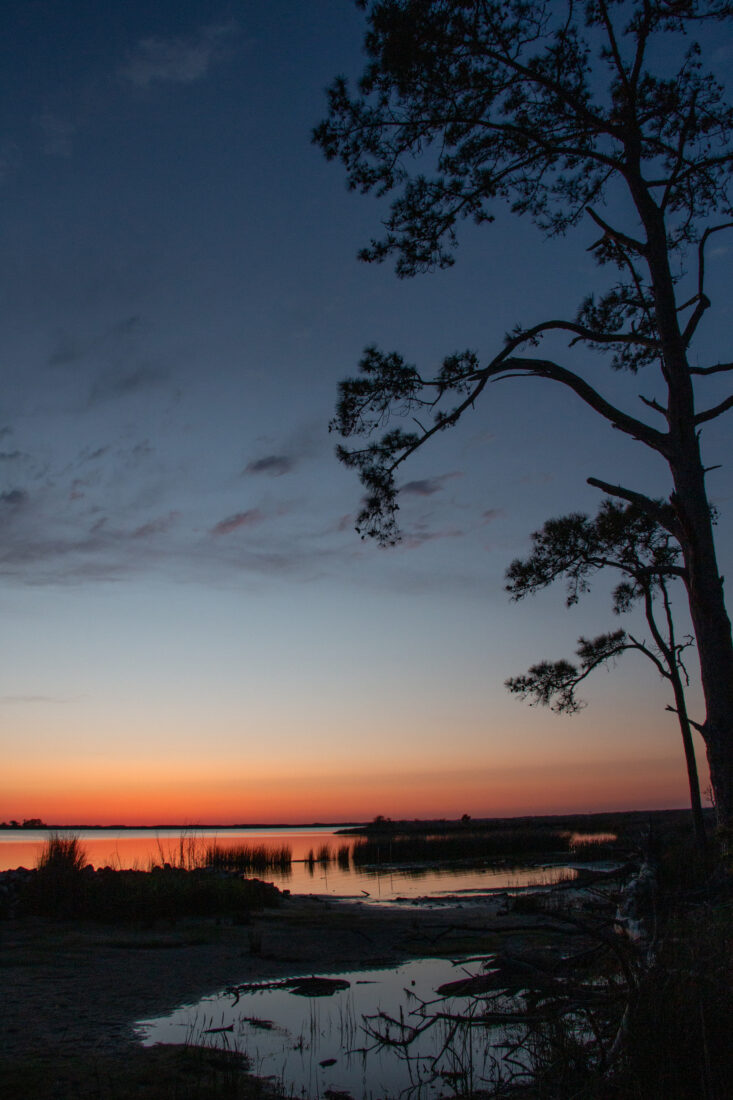
Leaving the webs behind, we pushed on to the shore—the very spot where, in June 1863, Confederate prisoners aboard the federal steamer Maple Leaf overpowered their guards and fled onto False Cape, eventually slipping back behind Confederate lines. As of this year, False Cape is now recognized as one of the most remote sites on the Civil War Trails.
But even my love of history couldn’t compete with what came next: the full moon spilling silver light over the dunes and a night sky so crowded with stars I couldn’t look away. My son was captivated by a different constellation entirely, this one scuttling at our feet: hundreds of ghost crabs.
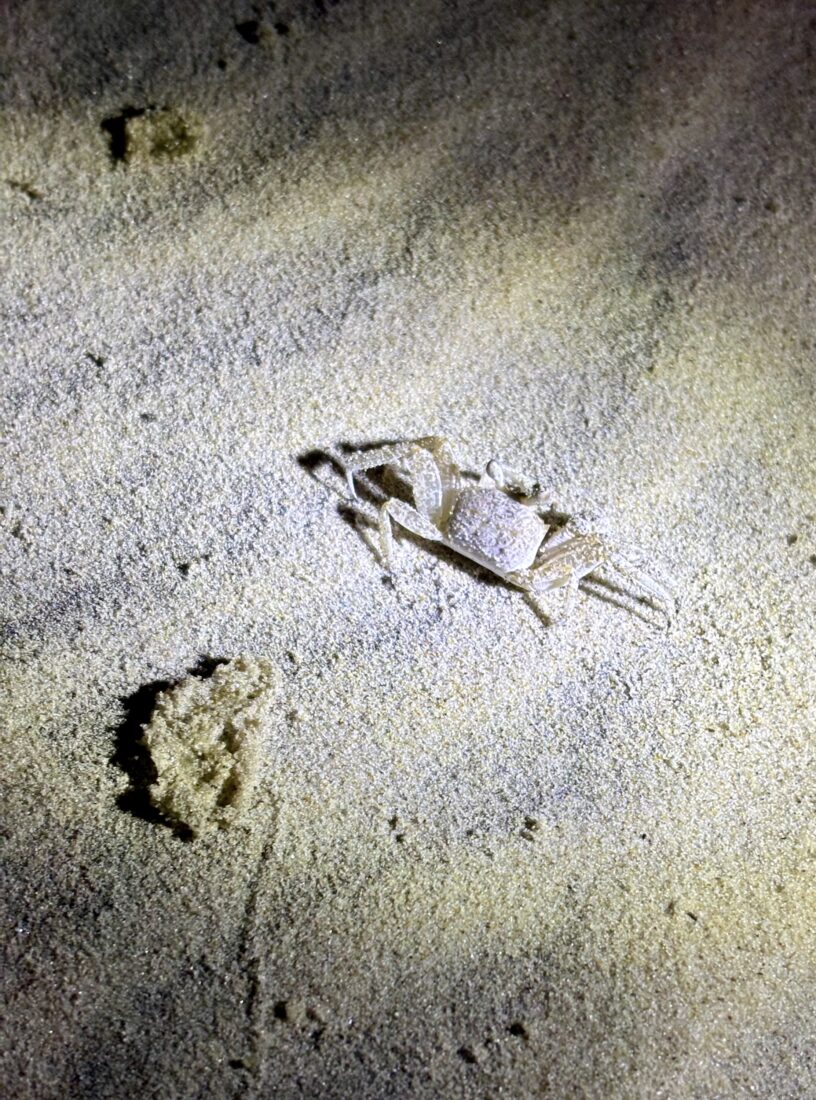
“Oh, there he goes!” he whispered to an eight-year-old co-conspirator on the tour. Side by side, their flashlights bobbed toward the seagrass in pursuit of more snow-pale crustaceans. I stayed behind, my feet sinking into the cool sand. With campfires forbidden, the moon out here is allowed to take center stage, casting a spotlight across the tide, and it seemed to dare me to step into the scene, set down my phone, abandon my compulsive photo-taking, and slip back into something wilder. I finally broke my gaze to see my son near the tide, spinning in circles, his arms stretched wide as if trying to hug the moon. No one looked disturbed by his whirling dervish display, so I let him spin on until ranger Kiester indicated it was time to trek back.
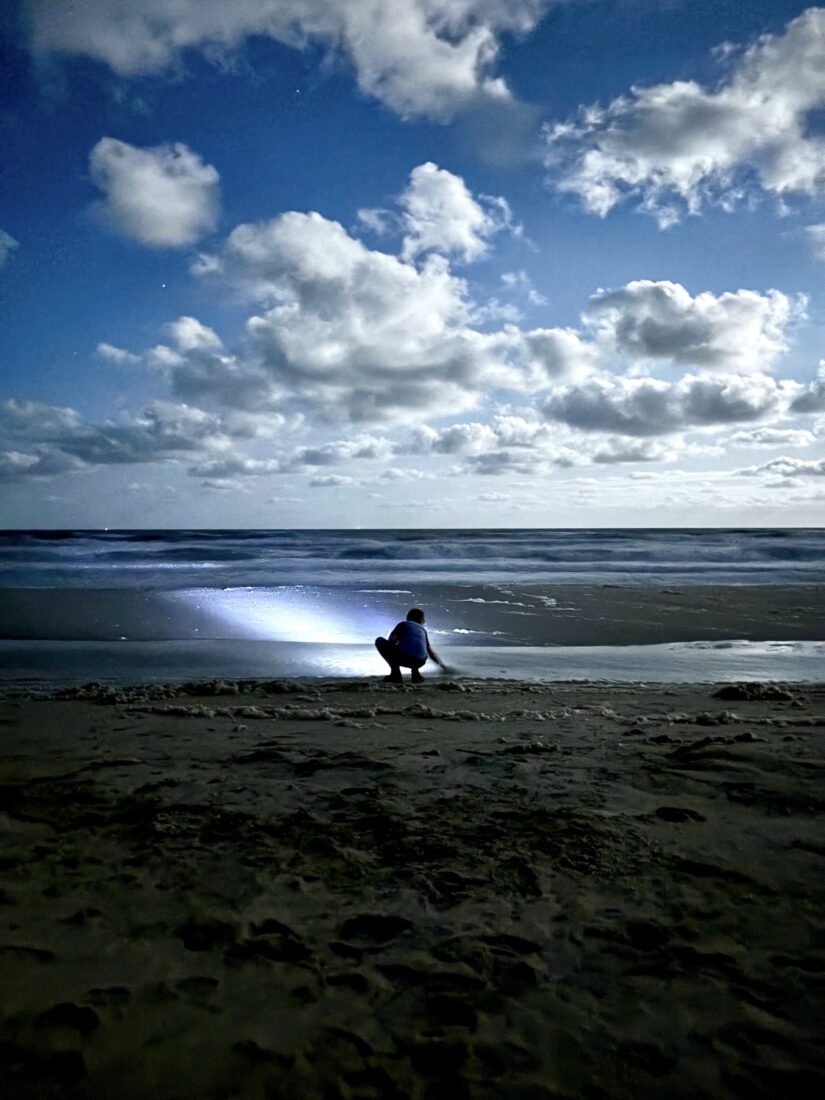
We threaded through the dunes, the maritime canopy folding over us in some places until the sky disappeared. Earlier, our guide had noted how rare places like this are. Only 15 percent of the world’s coastlines remain truly wild. As the tram rattled to life around 10:30 p.m., that fact sat heavy on my mind. My son’s head sank onto my shoulder. “Thanks for taking me here, Mom,” he said quietly, and the words settled deeper than the dark around us.
False Cape After Dark tours are $10 per person and offered every full moon, weather permitting, from 8:00 to 11:00 p.m.


